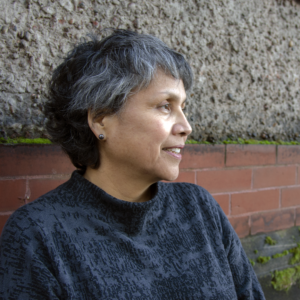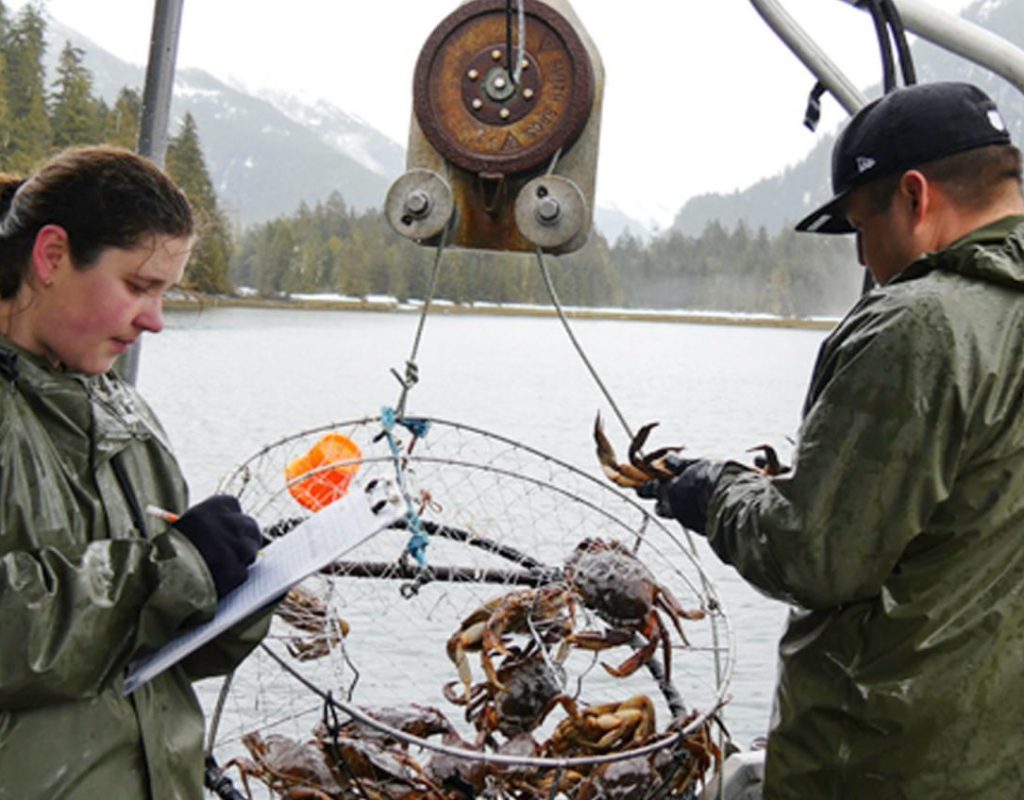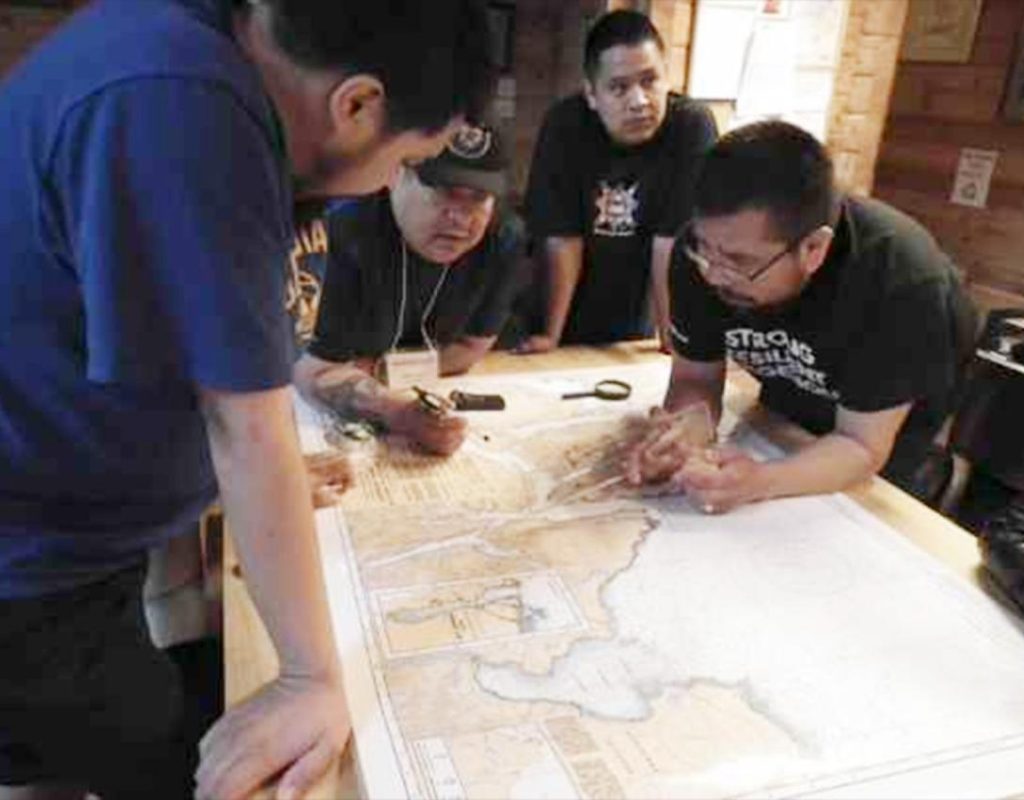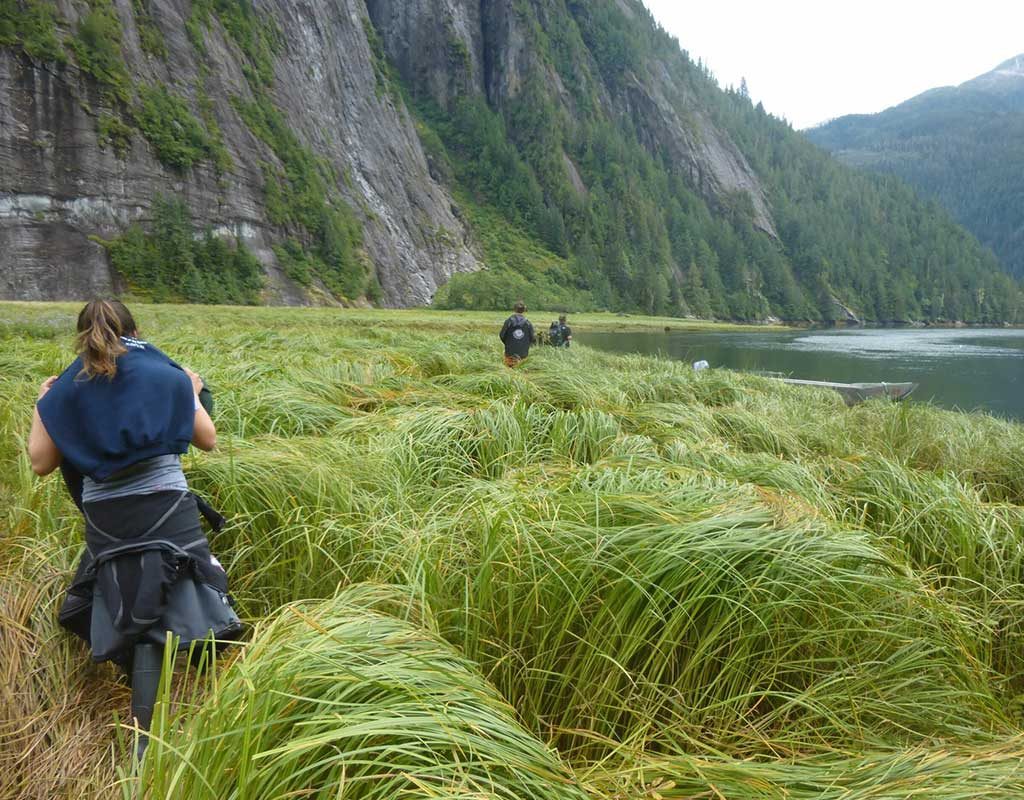
Director of the Indigenous Leadership Program
Gitga’at Guardians working in the waters of the Kitlope Heritage Conservancy/Huchsduwachsdu Nuyem Jees in August 2018. Photo credit: Lisa J. Watt
Centering this region’s Indigenous peoples and traditional land and water management knowledges.
Federal and state agencies and nongovernmental organizations across our region are finally recognizing the validity and efficacy of Traditional Ecological Knowledge (TEK), the deep and intimate ways of knowing that Indigenous communities have used to sustain themselves and protect the ecological integrity of their world. From cultural burns that promote healthy forests and landscapes to holistically managed fisheries, traditional Indigenous knowledges and techniques can have a valuable place in natural resources management today and open the door to new partnerships and collaborations where none may have existed in the past.
Of course, partnerships can take many forms but of growing interest among regional tribes and Alaska Native communities are co-management agreements and initiatives known as Indigenous Guardians. Through Guardians programs, tribes can exercise their inherent right to manage ancestral territories in ways that safeguard the health of ecosystems and promote the self-determination and well-being of Native people once again.

Sandie Hankewich and Ernest Mason (Kitasoo/Xai’xais Fisheries Program) conducting Dungeness crab surveys. Photo credit: Tristan Blaine
The Indigenous Guardians movement goes by many names—Watchmen, Stewards, Rangers, or Guardians. But no matter the name, the goal is the same: to foster tribal natural resources management that increase Indigenous communities’ capacity to help shape adaptive management planning and monitoring in their territories. It is the weaving together of Indigenous TEK with western science methodologies and technology to create lasting, Native-led environmental management.
The needs and activities vary from nation to nation, region by region. Guardians activities include: data collection and analysis; monitoring of natural and cultural resources such as traditional foods; protection of marine environments, sacred sites, and wildlife; habitat restoration; and compliance and enforcement that ensure resource users and visitors observe rules deemed necessary to support healthy ecosystems and protect tribal cultures.
Existing Guardians networks in Australia and Canada have demonstrated the practical benefits for Indigenous communities. Some are obvious: full-time and seasonal jobs, especially in remote areas; meaningful career and training opportunities; increased technical and programmatic capacity; youth engagement, mentorship, and training; new levels of trust, respect, and cooperation between partners; and increased community decision-making and outreach.
But the intangible benefits for Native peoples are even more profound: a healthier landscape as a result of enhanced environmental care; cultural recovery and revitalization; intergenerational sharing of knowledge and traditions; a new respect for Indigenous title and rights; and, pride in their ability to steward their homelands once again in ways that heal both the land and water, as well as the emotional, spiritual, mental, and physical health of tribal people.

Guardian Watchmen, community Elders, and stewardship directors share stories, knowledge and common concerns during the Coastal Stewardship Network’s 2017 Annual Gathering at Hakai Institute in April. From left to right: John Sampson, Roger Harris, Charles Saunders and Ernie Tallio of Nuxalk First Nation. Photo credit: Bessie Brown/Coastal First Nations
Guardians movements are not new.
In the southern hemisphere, the Australian government created the Working on Country program in 2007, a tailored funding stream that connected with the efforts of local and regional traditional owner groups over decades to build land and sea management capacity through the 80s and 90s in often remote Aboriginal and Torres Strait Islander communities. Previously, the funding had been more intermittent, poorly designed, and fragmented. The creation of Working on Country was a recognition of the efforts made by Indigenous leadership and supported under devolved funding from the Australian federal government.
Indigenous Rangers are involved in management of marine resources and cultural site and landscape pressures such as uncontrolled wildfire, invasive weeds, and feral species in Indigenous Protected Areas (IPA). Today, 127 discrete Ranger programs continent-wide are providing over 890 full-time equivalent jobs which supports employment during any given year of over 2,000 positions in a mix of full-time, part-time, and casual roles.
A 2015 evaluation found that Ranger programs combined with Indigenous Protected Areas could return three times the federal investment. The initiative has been so successful, the Australian Government extended the security of Rangers funding in March 2020 when it allocated AU$700 million (US$502 million) over seven years beginning in 2021.
In North America, Canadian First Nations are trailblazing Indigenous Guardians. More than thirty Guardians programs exist across Canada currently, funded in part by the federal government. In our bioregion, seven programs make up the Coastal Guardian Watchmen, a network of the Coastal First Nations-Great Bear Initiative on British Columbia’s north and central coast and on Haida Gwaii. Together, these First Nations communities are working towards increased local control and management of forests and fisheries, planning for marine and land resources in the Great Bear region, and sustainable development through ecosystem-based management. Discussion is underway to expand Guardians programs even further across Canada.
Clearly, the Guardians movement is rich with opportunity to uplift Indigenous leadership, stewardship, rights, control, TEK, and the protection and restoration of ancestral homelands for the benefit of all.

Members of the Coastal First Nations Watchmen patrol on the shores of Mussel Inlet, B.C. in Kitasoo/Xai’xais Territory. Along with continuing to serve in the field, program participants responded to community need during the COVID-19 pandemic—from collecting and distributing food and groceries for community members to checking up on Elders isolated at home. Photo credit: Sandra Thomson/Coastal First Nations
For now, Indigenous Guardians programs do not exist in the U.S. but there are two nascent efforts underway—in northern California and southeast Alaska. You will read more about them in the weeks ahead. Ecotrust’s interest stems, in part, from a long-held belief, as described by our founder Spencer Beebe when he wrote in 1992, “Any attempt to chart a sustainable course for the future must include the traditions, knowledge, and aspirations of Native people.” This guiding principle continues to resonate deeply among Ecotrust staff nearly 30 years later.
As interest in co-management agreements and the Guardians movement grows here, the challenges for these programs to succeed are apparent: 1) the need for federal and state agencies to commit to and fund co-management, and 2) the need for long-term, stable funding streams to make Guardians programs and networks sustainable. Who among the philanthropic community and which governmental agencies will invest in this valuable and deeply meaningful work?
Because at its heart, co-management is about respect – for Indigenous languages, cultures, and the Traditional Ecological Knowledges borne of ancestral landscapes and for the sovereignty of Indigenous communities working for a healthier environment and future.


NEWS
Juneau, Alaska (KINY) – The Central Council of Tlingit & Haida Indian Tribes of Alaska and USDA Forest Service signed a long-term partnership agreement supporting the creation of an Indigenous Guardians program for Southeast Alaska.